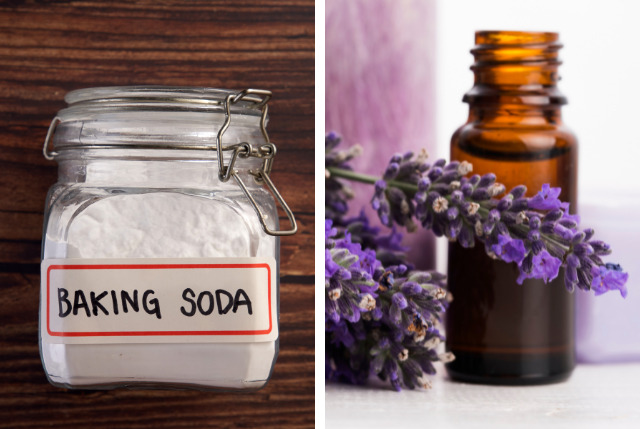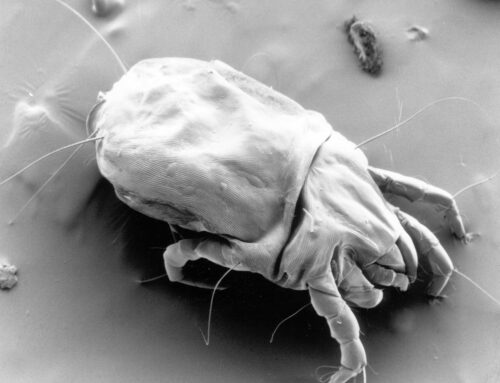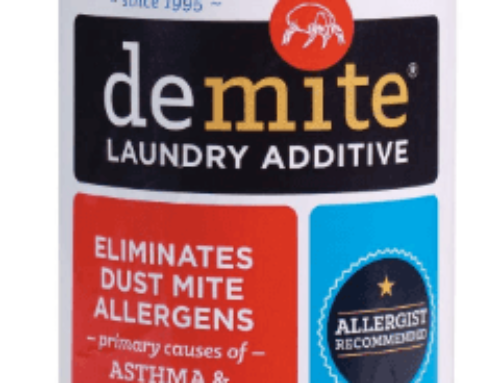Table of Contents
Dust mites are pretty much ignored until they start causing allergy problems to you or your loved ones. And when that happens, it’s only a matter of time before you launch a full-fledged war with these microscopic pests.
Sometimes, the arsenal that turns the tide in your favor is in the form of a common household product, the baking soda. Used by moms and chefs alike in making doughs to rise, baking soda may be what you need in killing the menacing dust mites.
What Is Baking Soda Made Of?

Baking soda is also known as bicarbonate of soda or sodium bicarbonate. It is a naturally occurring substance in living things that helps them in the maintenance of their PH balance.
Specifically, sodium bicarbonate is produced in the pancreas to improve digestion. It is an acid salt that reacts as a mild alkali with other chemicals.
Baking soda is obtained in two ways. The first one is through the passing of ammonia and carbon dioxide through concentrated sodium chloride. It can also be mined where it comes in the form of an ore called trona.
Regardless of the process used in obtaining the baking soda, it is dissolved into a solution. Carbon dioxide is then bubbled through this solution. After that, sodium bicarbonate precipitates out from this process forming baking soda.
Some common uses of baking soda include:
- Freshening of breath
- Polishing teeth or as a natural toothpaste
- As a natural air freshener
- In exfoliating of the skin as it is gentle
- It is used as a safe antacid for relieving heartburn
- In relieving insect bites
- It can also be used as a floor cleaner
Is Baking Soda Effective In Killing Dust mites?
A study was conducted to test whether or not baking soda applied to the bedroom or living room carpets had an effect on dust mites allergen levels, lung function, and medication use in asthma patients over a one-year period.
The study showed that baking soda did not have much of an effect on the mean allergen levels. There wasn’t much of a change recorded in the patients’ lung function or use of medication by the patients.
This could perhaps be because of the frequency in which the test was done. Further studies need to be conducted to test the effectiveness of baking soda in killing dust mites but this should be done more frequently and over a longer period of time in order to get the right conclusion.
Dust mites are commonly found in beds. This is because we sleep on our beds with each passing day and as a result, sweat, dead cells, and dust accumulate on the mattress. This provides a perfect breeding ground for dust mites and could lead to allergies.
Baking soda possesses antiseptic properties and also absorbs moisture. Furthermore, it has properties that will eliminate bad odor and your bed will subsequently be fresh. That shows that there is a strong possibility that baking soda could be effective in killing dust mites.
How To Use Baking Soda To Kill Dust Mites
Method 1: Baking Soda + Vacuum
This is a straightforward approach to sprinkling and suctioning on areas that are prone to dust mite infestation. Here’s how to get started.
- Get a pack of pure baking soda powder.
- Sprinkle the baking soda on the mattress or any mite-infected surfaces.
- Allow the baking soda powder to sit for about 15 minutes.
- Vacuum it all off. While doing this, use the hose attachment to completely suck up the baking soda. Doing this will ensure all the dust mites and the baking soda are sucked up completely. A vacuum cleaner that has a HEPA filter is the best for this task because it is very effective in picking up the dust mites and containing them compared to ordinary vacuum cleaners which will spread the dust mites around instead.
Note: This method is highly effective for mattresses with fabric surfaces. However, it’s not advisable to use this method directly on latex or even memory foam core.
Method 2: Baking Soda + Essential Oil

Baking soda + essential oil are a good combo for dust mite control. This is because you will be able to get benefits from both baking soda and the essential oil. The best part is, essential oils are well known for their therapeutic properties, which makes the cleaning process feel like aromatherapy.
Aside from treating allergies, essential oils can help you to address one of the common sources of symptoms — dust mites. However, not all types of essential oils are equally effective for killing dust mites.
In order to get the best results, it is advisable to pick essential oils that naturally contain acaricides. Some of the essential oils that you can use for this process include:
- Clove essential oil– Egyptian researchers found that clove essential oil is the most effective as it has an abundance of Eugenol at 62%.
- Eucalyptus essential oil – According to a study by Australian researchers, eucalyptus essential oil reduced dust mites by a startling 97%, thanks to the 1.8- cineol present in it. The oil also reduces allergic reactions.
- Rosemary essential oil – The Egyptians also did a study that found rosemary oil very effective in killing dust mites, also because of the 1.8- cineol present in it.
- Tea tree oil – This essential oil is also very effective in the elimination of dust mites.
- Fennel essential oil – Fennel essential oil is also very effective in killing dust mites. However, it should be used moderately. It should also not be used around pregnant women or people with epilepsy.
Note: Some essential oils are toxic to pets. Be mindful of diffusing essential oils if you have pets at home.
Method 3: Baking Soda + Essential Oil + Vacuum
Like the above method, you start with concocting a mixture of essential oil and baking soda. Then spray the solution on surfaces to gradually kill off the mites. Wait for at least 30 minutes for the mites to die off.
Then, use a high-power suction vacuum to remove the residues of the dead mites. Wear a dust mask if you’re highly sensitive to air-borne microparticles when vacuuming or disposing of the dust bag.
Precautions When Using Baking Soda
Compared to many other cleaning products, baking soda is relatively safe. However, it could present a safety concern seeing that it could cause eye irritation. Seeing that it is mostly powdery, it is advisable to wear goggles when handling it.
It could also irritate the skin and therefore, protective gloves and even clothing should be worn when handling baking soda.
Which baking soda works the best against dust mites?
Baking soda is a common item in many households. If you find one in your kitchen, you can use it as a dust mite control agent. There is no particular brand that is proven to be more effective because the powdery substance has the same chemical composition.
However, if you don’t have baking soda at home, you can get one from local stores or use reputable brands like Arm & Hammer. If you intend to use baking soda to bake cakes or pastries, it’s crucial to get one assured to be chemical-free and economical.
Alternative ways for killing dust mites

As persistent as dust mite is, these little pests can be controlled by various methods.
- Use a steam cleaner. Steam cleaners emit high-temperature vapor, which can kill dust mites in an instant.
- Sprinkle diatomaceous earth. Diatomaceous earth or DE, is fossilized planktons that tear dust mites apart and wick moisture of their body. Choose food-grade diatomaceous earth for a non-toxic solution.
- Wash with dust mite detegerent. Pillowcases, bed sheets, blankets, and other beddings can accumulate mites and their fecal pellets. Add dust mite detergent or additive during laundry to neutralize the mites.
- Install an air purifier. Placing air purifiers near your bed helps to remove dust mites that were sent airborne when you make heavy movements against the mattress.
Final Thoughts
It will be far-fetched to claim that baking soda can totally eradicate dust mites in your home. The harsh truth is, that you can’t kill off all the dust mites in your home, but it is possible to reduce them to a level where their presence does not trigger allergy symptoms.
I hope you have great results in eliminating dust mites with baking soda. Let me know how it fares for you.




Leave A Comment